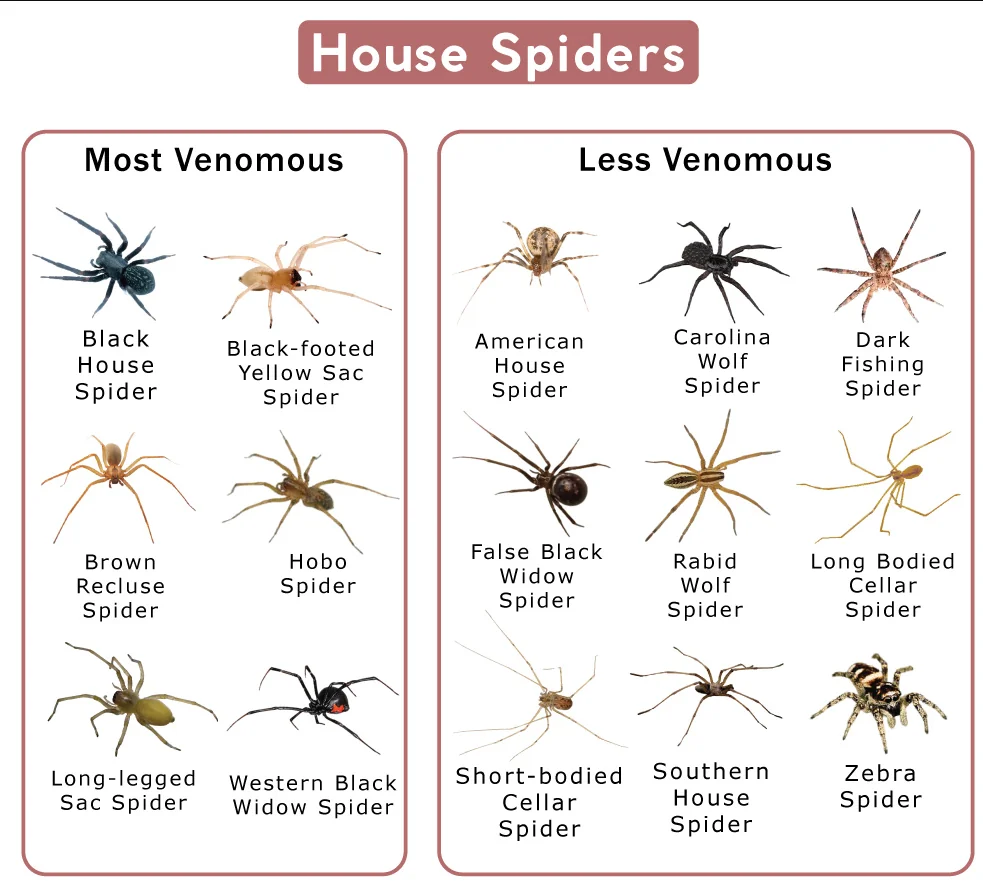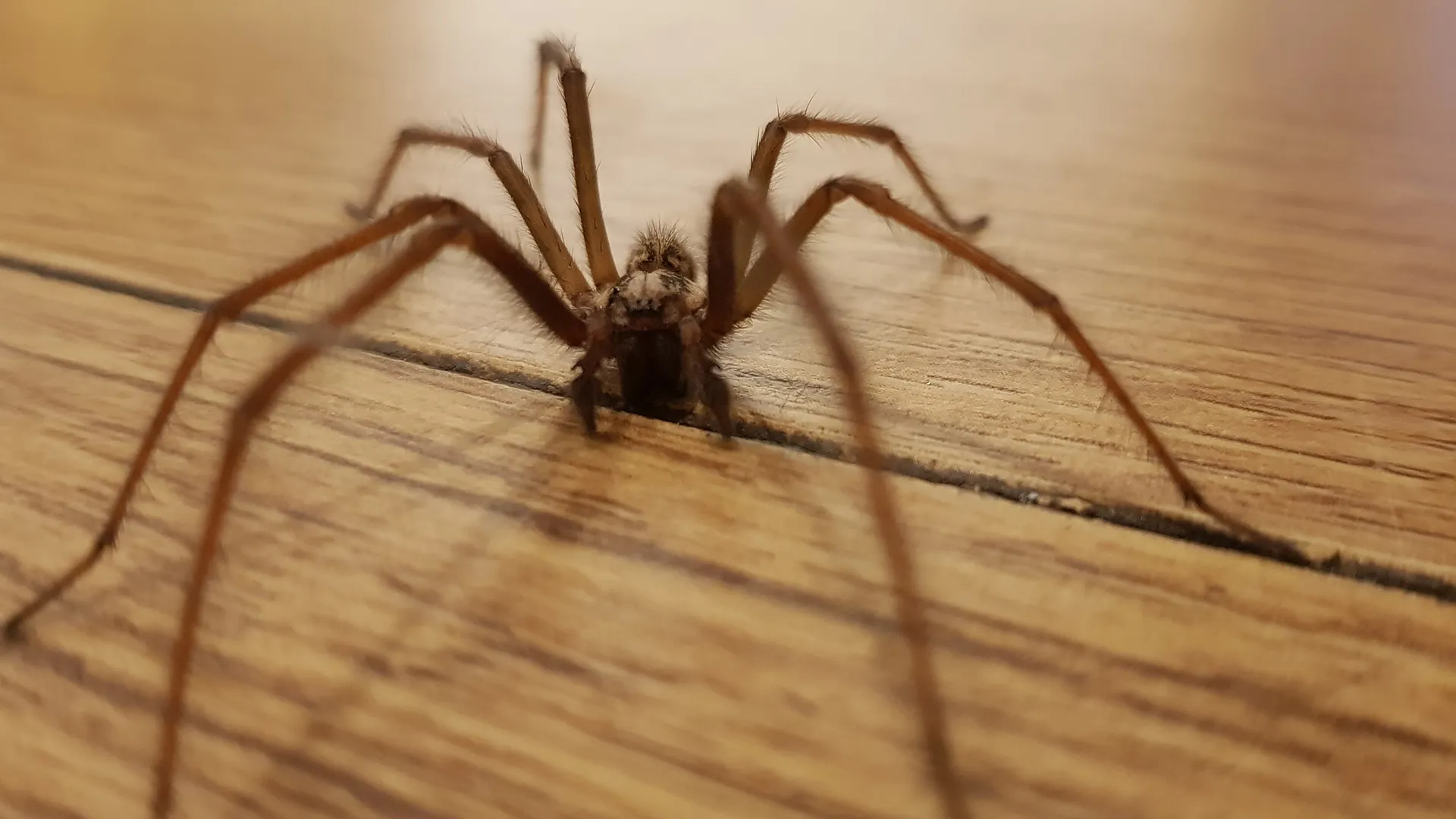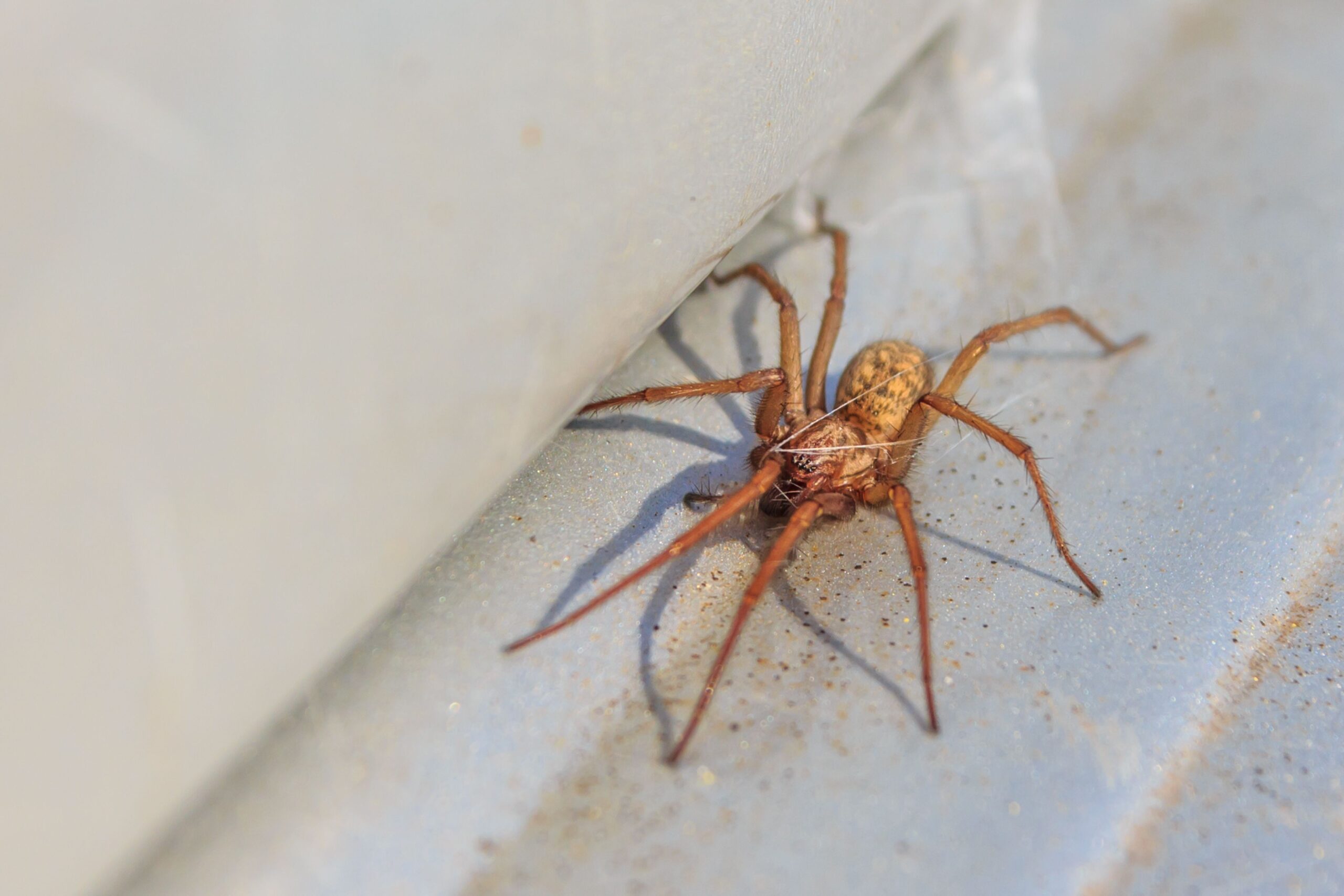Florida’s subtropical conditions – known for their warmth, humidity, and milder winters – not only attract people seeking sunshine and coastal living but also nourish a variety of pests. Among them, spiders can flourish when abundant prey (like roaches, mosquitoes, or flies) roam. In Daytona Beach, along with the neighboring Ormond Beach, ignoring signs of spiders can lead to repeated webs, venomous encounters, and occupant anxiety. This service page explains why spiders thrive in Florida, what clues indicate an infestation, and why partnering with a professional spider exterminator for spider treatments is the most reliable way to secure your home or business. By acting decisively upon noticing egg sacs or frequent spider sightings, you save yourself from ongoing occupant stress, possible bites, and the added work of constant de-webbing.
Why Spiders Flourish in Florida

- Mild Winter Climate
In colder locales, long winters can reduce spider numbers by imposing dormancy or killing off many species. Florida’s winter rarely drops below freezing for sustained periods, letting spiders remain active, feed, and breed nearly year-round. Inside air-conditioned or heated rooms, they find consistent warmth, seldom requiring them to seek shelter from harsh temperatures. - High Humidity and Rainfall
Many spiders thrive where humidity is steady, thanks to the abundance of insect prey that similarly flourish in damp or tropical-like conditions. Florida’s frequent rains keep lawns, gardens, and corners of buildings moist, encouraging large insect populations – a steady food source that draws spider species indoors if occupant vigilance or structural barriers are incomplete. - Minimal Seasonal Dormancy
While cold regions see reduced spider activity for months, southwestern Florida’s climate fosters near-constant breeding. A stray spider or two can become a noticeable presence if occupant or property manager routines – like removing webs or controlling insects – lag behind. - Stable Indoor Temperatures
Heated or air-conditioned environments maintain conditions many spiders enjoy. If occupant housekeeping fails to address insects or high moisture, spiders exploit these stable surroundings to construct webs or hide in corners, behind furniture, or near windows. Without occupant or professional countermeasures, they remain and multiply. - Frequent Movement of Residents and Goods
Communities like Daytona Beach and Ormond Beach attract tourists, part-time residents, and seasonal shipments. Spiders may travel unnoticed inside crates, secondhand furniture, or personal belongings. Once inside, they hide behind wall hangings or in attic corners, building webs if occupant or staff checks do not catch them early.
Indications of a Spider Infestation
- Multiple Webs Indoors
While occasional webs in out-of-the-way spots might be routine, finding numerous webs across ceilings, near door frames, or behind furniture reveals a larger spider presence. If occupant removal leads to webs reappearing quickly in the same areas, that suggests active breeding or a high spider population calling for occupant or professional help. - Venomous Spider Sightings
Florida hosts potentially harmful spiders, such as black widows (easily identified by red hourglass markings) or brown widows. Although many local spiders are harmless, venomous types near occupied zones – like garages, storage rooms, or outdoor furniture – raise immediate safety concerns, especially if children or pets roam those areas. - Egg Sacs in Crevices
Spiders lay egg sacs containing many spiderlings. Finding these small, silk-encased balls in corners, around window sills, or under eaves indicates active breeding. Swift occupant or professional removal can limit surging populations once those eggs hatch. - Persisting Insects
If your property hosts plenty of insects – roaches, ants, mosquitoes – spiders often appear to feed on them. Reducing insects indirectly reduces spider interest in your home. Failing occupant steps – like controlling pests or sealing cracks – paves the way for spider expansions. - Occupant Distress Over Spiders
Seeing large, fast-moving spiders or webs in living spaces can alarm many. Occupant complaints about daily web removal, fear of venomous bites, or frequent spider sightings – especially in bedrooms or bathrooms – typically prompts occupant or professional action for thorough removal.
Why Quick Spider Treatments Are Important
- Potential Bites from Venomous Species
While most Florida spiders pose minimal risk, encountering black widows or other venomous varieties can lead to painful bites requiring medical attention. Eliminating these species early ensures occupant safety and lowers the chance of unpleasant incidents. - Excessive Web Accumulations
Even non-venomous orb-weavers can hamper occupant routines if webs repeatedly span doorways or corners. Removing them daily becomes a chore that occupant or staff can grow tired of. Professional or occupant-based elimination methods reduce the ongoing hassle of tangling with new webs each morning. - Anxiety and Occupant Complaints
Spiders cause apprehension or phobias for many people, undermining occupant comfort at home or for customers in a business setting. By removing them quickly, occupant peace is restored, letting families or staff move freely without scanning every corner for lurking arachnids. - Egg Sac Hatching
Overlooking spider egg sacs fosters future generations. Each sac can contain numerous spiderlings that spin webs in multiple corners or behind large appliances. Scheduling occupant or professional measures before eggs hatch spares you from a much larger wave of spiders and webs.

Why a Professional Exterminator Is Key
- Accurate Species Identification
A spider exterminator discerns whether you have harmless house spiders or more concerning venomous species. Understanding their typical hiding or breeding habits clarifies whether to focus on perimeter sprays, web removal, or sealed entry points. - Targeted, Low-Exposure Treatments
Overusing general sprays risks occupant chemical overexposure without guaranteeing kills for hidden spiders. Professionals apply insecticides or insect growth regulators exactly where spiders or their prey dwell – corners, eaves, or hidden cracks – limiting occupant or pet contact while forcing spiders into lethal zones. - Physical Web and Egg Sac Removal
Vacuuming or brushing away webs physically removes spiders’ hunting grounds and attached egg sacs. Doing this thoroughly, combined with insecticide usage, disrupts spider expansions. Exterminators know how to reach high ceilings or tight corners occupant alone might struggle with. - Insect Control
Because spiders follow insect prey, occupant or professional steps controlling roaches, ants, or mosquitoes indirectly hamper spider sustenance. Without enough insects, spiders either starve or look elsewhere. This synergy fosters lasting relief from spider invasions. - Follow-Up and Preventative Measures
Since some spider egg sacs hatch weeks after occupant or professional removal, re-checking for new webs or young spiderlings ensures none reappear. If occupant sightings remain or venomous species resurface, additional spot treatments finalize thorough elimination, letting families or staff resume normal routines.
Methods a Spider Exterminator Might Use
- Inspection and Analysis
Professionals examine corners, ceilings, eaves, behind furniture, or yard edges for webs, egg sacs, or adult spiders. Identifying potential insect prey or damp areas helps shape an effective approach—like applying perimeter insecticides to reduce insects or vacuuming existing webs in known hotspots. - Physical De-Webbing
Removing webs, along with attached egg sacs, denies spiders their immediate feeding setups and stops hundreds of unborn spiderlings from hatching. Occupants typically discard these webs in sealed bags outdoors. A repeat vacuum or brush pass ensures corners remain free from leftover silk. - Insecticides and Dust
Applying insect growth regulators or contact insecticides where spiders dwell or cross – baseboards, cracks, or near lighting – kills spiders traveling these treated surfaces. Some treatments remain active for days or weeks, ensuring newly hatched spiders also encounter lethal contact. Occupants often wait until dryness or re-entry intervals pass, swiftly returning to routine living. - Yard Perimeter Treatments
Outdoor orb-weavers or ground-hunting spiders often arrive from yard edges or windows. Professionals might spray along foundations, eaves, or shrubbery. Reducing the insect population around property perimeters – for instance, using insect repellents or adjusting outdoor lighting – also indirectly cuts spider interest. - Monitoring
Sticky traps in corners or behind furniture reveal if fresh spiders keep emerging post-treatment. Occupants watch for new webs or sightings over weeks. Should occupant complaints persist, further spot treatments or yard solutions address overlooked hiding spaces or newly arrived spiders.
Service Area: Daytona Beach and Ormond Beach
Daytona Beach: Famed for beaches and motorsport events, Daytona Beach sees occupant turnover or short-term rentals that might unwittingly bring spiders in boxes or personal items. Swift occupant checks – clearing corners, scanning furniture for webs – plus occupant synergy with professionals hamper expansions across multi-room properties or tourist accommodations.
Ormond Beach: A scenic coastal spot near the Atlantic, Ormond Beach’s warm, humid environment fosters insects that feed local spider species. Occupants combining yard maintenance – removing leaf piles, trimming shrubs – with robust interior housekeeping cut down on insects that draw spiders indoors. If occupant or staff discover persistent webs or egg sacs, a thorough extermination plan ensures long-term relief.

Why Our Spider Treatments Excel
- Florida-Optimized Approach
Year-round mild weather means spiders remain active nearly all seasons. We integrate occupant housekeeping—like removing webs repeatedly, controlling insects, sealing cracks—and precise chemical usage, ensuring spiders meet lethal conditions at every life stage. - Focused, Limited Exposure
We apply insecticides or insect growth regulators exactly where spiders build webs – behind appliances, in corners, or near eaves – curbing occupant or pet contact with chemicals. Occupants often remain on-site, needing only brief waiting times for dryness or ventilation after application. - Preventative Occupant Guidance
Alongside extermination, we guide owners on adjusting outdoor lighting to less insect-friendly bulbs, sealing foundation cracks, or discarding yard clutter. Such occupant synergy denies new or wandering spiders a foothold in damp corners or insect-rich spots. - Follow-Up Confirmation
Because leftover egg sacs could hatch days or weeks after initial removal, occupant or professional re-checks confirm no fresh sightings. If occupant complaints resurface, a second wave of targeted treatments finalizes occupant tranquility, ensuring no widespread re-infestation emerges.
Next Steps
Seeing webs accumulate repeatedly, worried about black widow spiders near garages, or stumbling upon egg sacs behind furniture? Contact us to learn more or schedule your service. Our spider treatments in Daytona Beach and Ormond Beach remove adult spiders, disrupt egg sac hatching, and curb insect prey, safeguarding occupant peace and safety. Working with a professional exterminator spares you trial-and-error, guaranteeing a swift reduction in eight-legged intruders and the webs they weave.
Prompt occupant measures – like vacuuming webs, scanning yard edges, or controlling other pests – hamper spider expansions across multiple rooms or outside corners. Through occupant vigilance – removing clutter, sealing cracks – plus specialized insecticides or perimeter sprays, spiders soon face lethal contact. Freed from daily web tangles or the dread of venomous bites, southwestern Florida property owners fully enjoy Florida’s mild climate and outdoor attractions, unencumbered by hidden arachnid nests lurking in rarely checked corners.
